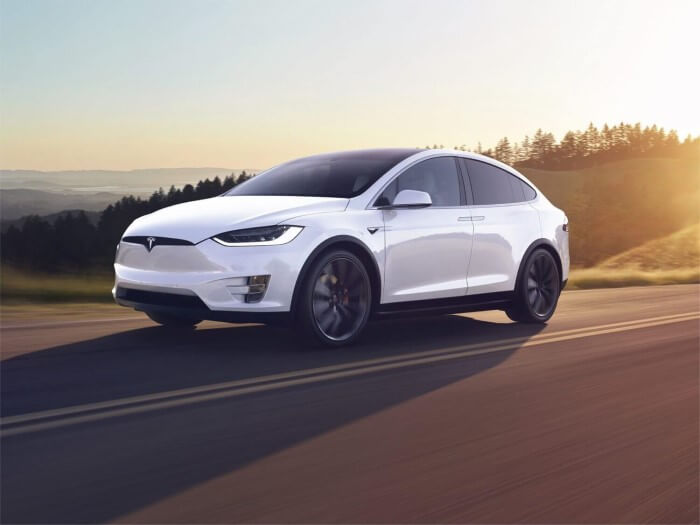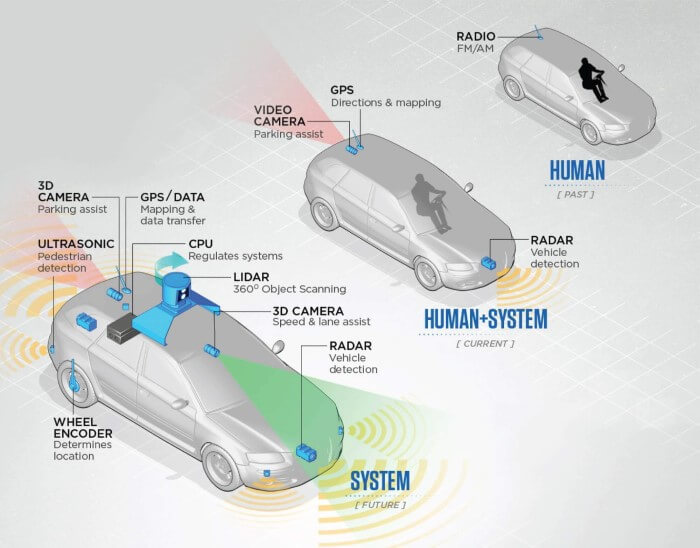The Future of Autonomous Car Technology

Content Map
More chaptersAutonomous car is as close to reality as ever. When will this technology be available? Let’s have a talk about the reality of “self-driving cars”.
Ever since the idea of an autonomous car went from ‘science fiction’ to plausible in the late 2000’s, the race has been on between companies to deliver the first truly safe, viable, and legal self-driving vehicle. As a result, it’s no longer a matter of if, but when autonomous technology will be the standard.
History of the autonomous car
The early days
The concept of the self-driving car has been around since the 1930’s. At the 1939 New York World’s Fair, General Motors held an exhibit showcasing their vision of the world in 20 years’ time, and self-driving cars was one of them.
However, trials didn’t really kick off until 1977, when Japan’s Tsukuba Mechanical Engineering Laboratory developed the first semi-automated car, but it could only be tested in a highly control and specified environment.
Then, the Defense Advanced Research Projects Agency (DARPA) funded various iterations of the autonomous car, with contributions from Mercedes Benz, Carnegie Mellon University and Bundeswehr University. Each new iteration saw improvements.
Over time, the cars could reach higher top speed and drive through more complex routes with multiple lanes, traffic lights and other obstacles.

2004 DARPA Grand challenge
However, momentum really took off when the first DARPA Grand Challenge took place in 2004. Here, participants had to build a self-driving car (or modify an existing car) out of salvageable parts like sensors, radars and chips. Once built, the cars had to complete a 150-mile course in the Mojave Desert.
Unsurprisingly, no car reached the finish line.
But it only took participants another year to improve their craft. In fact, five cars finished that same race in 2005. Plus, the course became more demanding, requiring cars to follow road rules, make legal U-turns, merge and park.

Current state of autonomous technology
Fast forward to today, what was once a naive and fruitless pursuit of a far-fetched dream is now a booming industry.
Major players like Tesla, Google, Waymo, IBM, and various other auto manufacturers – such as Ford, General Motors, Mercedes, and Nissan – have jumped on the bandwagon to push their technology forward, and become the first brand to deliver a truly autonomous vehicle.
To date, there are over 40 major companies working on autonomous technology, and hundreds of smaller companies are entering the race too.

Understanding the technology
So, how exactly does self-driving technology work? It’s close to impossible to cover everything within the scope of an article. But here’s a quick overview of the most crucial advancements in the technology so far.
Cameras
Just like a real driver, cameras are the eyes of the autonomous car. Cameras are set on each side of the vehicle – front, back, left, and right – which gives the car a 360-degree view of its surroundings. They’re great at spotting other vehicles, pedestrians, trees, traffic lights, signs, and lane lines, to name a few. As cameras become more advanced, the number of objects they can see and interpret will only increase.
LiDAR (Light Detection and Ranging) Remote Sensing
Placed on top of most self-driving cars, these spinning devices are like an advanced version of radar. They work by firing out millions of laser beams each second, and then measuring how long they take to bounce back. The LiDAR then uses this data to build a 3D map of the environment, which is more accurate and precise than a radar.
Unfortunately, LiDAR’s have their downsides. They’re expensive to produce, hard to manufacture on a large scale, and not durable enough to resist the elements like extreme heat, cold, rain, and humidity. Fortunately, companies are investing millions into making them more reliable and accessible to the masses.
Radars
Used in conjunction with cameras and LiDARS, radars bounce radio waves around to get a clear visual of their surroundings and spot a range of objects, including cars, buildings, trees, traffic lights, and more. Aside from being very useful, they can withstand harsh weather and are relatively affordable to build.
Maps
Through the use of cameras and LiDARS, the car can build a map of the surroundings in precise details. The map serves as a useful reference for the vehicle. The purpose of the map is to confirm that what the sensors and radars are telling the vehicle are indeed accurate. In essence, these maps are the more accurate and sophisticated versions of standard GPS.
Machine learning
Think of machine learning and artificial intelligence as the ‘brain’ of autonomous cars. In essence, they’re programmed to teach the computers inside the vehicle how to navigate through different obstacles. For instance, change lanes, maintain a safe distance from other cars, stop at traffic lights and follow the speed limit.
Of course, teaching a self-driving car to behave under every real-world scenario is a huge job. It’s one of the biggest challenges of autonomous technology. The cars must be driven for millions upon millions of miles, learn from their mistakes, respond accordingly to different situations, and comply with different road laws in different countries and states.
On top of this, self-driving cars must be smart enough to predict what the most likely outcome of a scenario will be, as opposed to just responding to an event after it happens.

Advantages of autonomous cars
More free time
Since autonomous cars get you from A to B with no human interaction, you’ll have more time to relax, socialize, sleep, and work during trips. This extra downtime could also have a positive impact on your mental health and well-being too.
Safer trips
Autonomous cars will be able to sense danger and avoid road accidents before they occur, potentially saving millions of lives. This could also save the global economy billions in damages and annual health care costs.
Faster trips
With the ability to respond to changing conditions and choose the most optimal route, travel time will likely be shorter. More intelligent navigation could also reduce traffic congestion as well.
More accessible
People with a disability will be able to leave the house more frequently. Without having to rely on friends or family, taxis or ride sharing, they can go to the store, a doctor’s appointment, or catch up with friends.

Disadvantages of autonomous cars
While the future of self-driving cars is promising, the technology has not been without disruption. Here are some of the main obstacles that autonomous technology has to overcome:
Safety
As previously mentioned, autonomous cars must be smart enough to consistently obey the rules, avoid hazards and follow directions. So far, the technology isn’t quite there yet.
Also, there has been a handful of fatalities during testing. Two Tesla drivers in the US have died so far. One collided with a truck, while the other hit a highway barrier. In 2018, a woman named Elaine Herzberg in Tempe, Arizona, was struck by a self-driving Uber Volvo XC90 operating in autonomous mode.
In response to these incidents, companies have been far more cautious with rolling out the technology, and making sure that safety drivers are always present and alert during testing.
Economic factors
When autonomous cars become the standard, it will have a huge impact on the economy.
Auto mechanics will need trainings on how to service autonomous cars, and have access to the necessary parts at their workshops. Insurance companies will need to create new policies to cover autonomous cars. Cities and public infrastructures will need to be redesigned to better accommodate these vehicles.
Furthermore, these industries will have to work together to create an environment where autonomous cars can co-exist with manual drivers.
Public perception
Changing the public perception of autonomous cars will be a challenge.
Even now, people are skeptical. Based on research from the Partners for Automated Vehicle Education (PAVE), a coalition of industry experts and non-profits,they revealed that 3 in 4 Americans think autonomous technology ‘is not ready for primetime.’
Furthermore, 48 percent of respondents would never get into a self-driving taxi or share ride car, and 20 percent think self-driving cars will never be safe.
To change this perception, companies will need to be more transparent about their testing procedures. They’ll also need to be more realistic about the kind of outcomes that autonomous technology can deliver, and convince the public that self-driving and manual cars can co-exist safely.
Extra funding and support from the government will also help shift public perception into a more positive light.

Looking towards the future
Overall, while the journey to a fully autonomous vehicle world is still far off, it is still a very close possibility.
When implemented safely and correctly, the benefits are tremendous. Travel will become safer, more affordable, and accessible. People will have more free time during travel to focus on personal and work-related duties. There’ll be less accidents on the road (which will help ease the burden on our healthcare system).
On top of this, self-driving cars will produce less pollutants than standard cars, resulting in a cleaner and greener environment.








